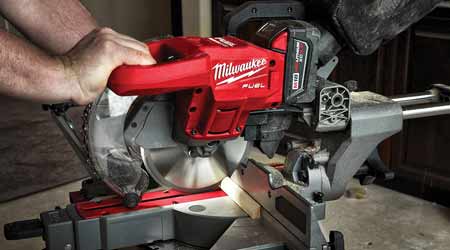 New generation power tools are seeking to enhance the capabilities and range of front-line technicians in commercial and institutional facilities.
New generation power tools are seeking to enhance the capabilities and range of front-line technicians in commercial and institutional facilities.Power Tool Productivity: Tracking and Monitoring
New generation power tools allow for putting more power in technicians' hands with advances in battery technology, monitoring and tracking, and ergonomics.
Tracking and monitoring
Many of the latest power tools give users and managers a host of data designed to help them monitor the location and condition of the products. For example, power modes on tools with advanced electronic monitoring offer several modes — normal, sleep, full sleep, hibernate, and pre-shutdown — to help technicians minimize power use. A smart power output controller automatically switches through these modes, depending on occurrence of specific events.
New batteries also have fuel-gauge displays that allow users to check remaining run time before starting a job, eliminating unnecessary trips back to the shop. Some models track individual cell voltage readings, provide overload protection, and include temperature management systems.
One example of advances in power tool batteries is the 18-volt Li-Ion-powered jigsaw that weighs 6.3 pounds and can cut 30 meters on chipboard with one charge. It has multifunctional electronic monitoring, no-tool blade change, a rubber-coated full bow grip, air cooling for quicker charge and longer service, variable-speed electronics for variable stroke rate, and a cutting-line integrated work light.
A heavy-duty 36-volt, three-pack of Li-Ion batteries offers an example of the range of tracking and monitoring features available today. An electronic monitoring system regulates voltage for heavy-duty applications, and a fuel gauge ensures continuous power monitoring. In addition, the pack has a 4 Ah rating, yielding a robust energy capacity of 144 watt-hours. The packs have heat-conductive housing to cool internal cell temperatures for longer battery life.
For better tool tracking, managers can use small electronic tracking tags mounted on expensive shared tools. A cell phone app tracks users’ identification and tool location for better control and quicker retrieval.
Among the manual tracking methods managers can use to improve productivity are keeping a close watch on injury and illness trends and involving workers in tool selection. Some distributors offer training, as well as loaner tools that technicians can use under actual work conditions. This option makes the most sense if managers and staff are first informed about the latest technology innovations. They can better match the available technology with their workplace needs.
Related Topics:














